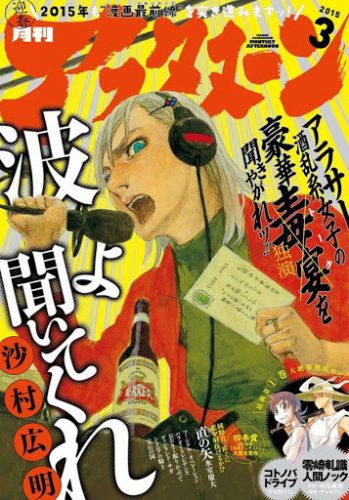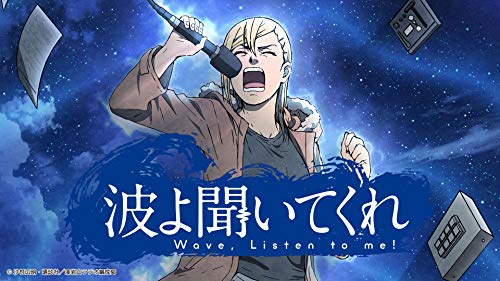
Many people who have never set foot within Japan have this impression that it’s high-tech. Based on anime and numerous products that have been coming out of there for the last 40 years, we can’t blame people that have such assumptions. As of 2019, seniors make nearly less than 30% of the population. So, how does this relate to anime? It goes back to Wave, Listen to Me!, an anime about Sapporo’s hottest radio drama.
Radio Dramas?
As stated within Wave, Listen to Me!, radio dramas are pretty much a dying form of entertainment. While radio dramas may be “dying” in Japan, they had more or less gone the way of the dodo by the dawn of the 1950’s, when television was starting to become mainstream. As you can easily guess, Americans would get their entertainment through the radio. As stated in episode 2 of Wave, Listen to Me!, Orson Welles supposedly caused a nationwide panic with his broadcast of War of the Worlds on Halloween 1938. As portrayed, Minare, the main character, tells a shocking story of wanting to murder her ex-boyfriend, and manages to capture listeners as if it was real.
Audio Dramas in Japan
While radio dramas may be dying in Japan according to Wave, Listen to Me!, it doesn’t mean that audio entertainment as a whole is going away anytime soon. As a matter of fact, numerous manga titles and games have long traditionally gotten audio dramas that either air on the radio or are released on CD or cassette depending on the times of its release. While the 7Seeds anime adaptation finally premiered in 2019 after the manga ended its 16-year run, it was first adapted as a radio drama in 2003. Also, there was a drama CD of Hajime no Ippo that was released in 1996, four years before its first anime premiered. In some instances, certain manga titles take a while or if it at all to get an anime, so getting an audio drama is obviously a cheaper approach. Even to this day, certain manga and games are still getting such adaptations.
Senior Dominated Society
While the Wave, Listen to Me! anime doesn’t really emphasize this quality, but if you have any awareness of Japan’s present situation, it’s easy to conclude why audio dramas are still a thing. As we stated earlier, Japan has one of the highest elderly populations in the world due to the nation’s declining birth rate. According to an official Sapporo survey from 2015, their senior population (as in age 65 and over) was about 25%!
While this isn’t directly stated in the anime (as of yet), you have to take into account how seniors as a majority (as well as other cultural factors that have yet to come into play, or at all) can influence society. As we all know, they’re not the type of people that are willing to change their ways, especially in a country such as Japan that has more of a definitive hierarchy system compared to other cultures.
As a result, older or non-existent business practices in some countries such as using fax machines are still common in Japan. In addition, while video rental is largely gone in the United States and other Western countries, chain rental stores such as Tsutaya and Geo are still around thanks to the senior population who cannot adjust to modern-day conveniences such as streaming services.
Making It Retro
Considering that anime is meant to appeal to younger viewers, Wave, Listen to Me! can’t exactly use senior citizens as its cast. So through someone as blunt and bombastic as Minare, a 26-year-old waitress, the network can use her natural qualities to appeal to listeners. While she may not be as raunchy as Howard Stern, her performance on the radio based on her reactionary nature just allows the listener to instantly believe what she’s saying as if she’s actually there (such as being hunted by a bear, or wanting to kill her ex-boyfriend).
As the anime portrays a younger audience for Minare, it helps give radio dramas a retro-like quality to it. Through a younger audience within the world of Wave, Listen to Me!, it can also help make it appealing to a younger audience in real life. As a result, thanks to the elderly population maintaining older practices, the nation’s present youth have a better awareness of older technologies and practices, and how they are applied. Thanks to that, the youth of Sapporo in Wave, Listen to Me! can appreciate a quality radio drama (or on CD).
Final Thoughts

Unlike a majority of anime which tends to mostly use Tokyo as a setting, by portraying a smaller city such as Sapporo which has a significant senior population, audiences can get a more accurate feeling on how an elderly population can affect society, but without having to use elderly people in its cast. Older folks are likely to enjoy tech that they grew up with, and that also includes how they consume their entertainment. With Japan having some of the highest number of centenarians in the world (along with having a nation where people are most likely to develop conditions such as dementia), it’s only natural that radio dramas still exist in Japan.
While Wave, Listen to Me!, openly admits radio dramas are slowly dying in Japan, there are real-life factors that aren’t acknowledged in the anime that helps explain its presence. It all comes down to having a country where seniors are progressively becoming the majority, and that is truer in cities that aren’t Tokyo, Osaka, or Nagoya. Through young characters in Sapporo, it can expose non-Japanese audiences to forms of entertainment that were gone by the time boomers were kids. How about you guys, do you get a sense of Japan being old-fashioned?




